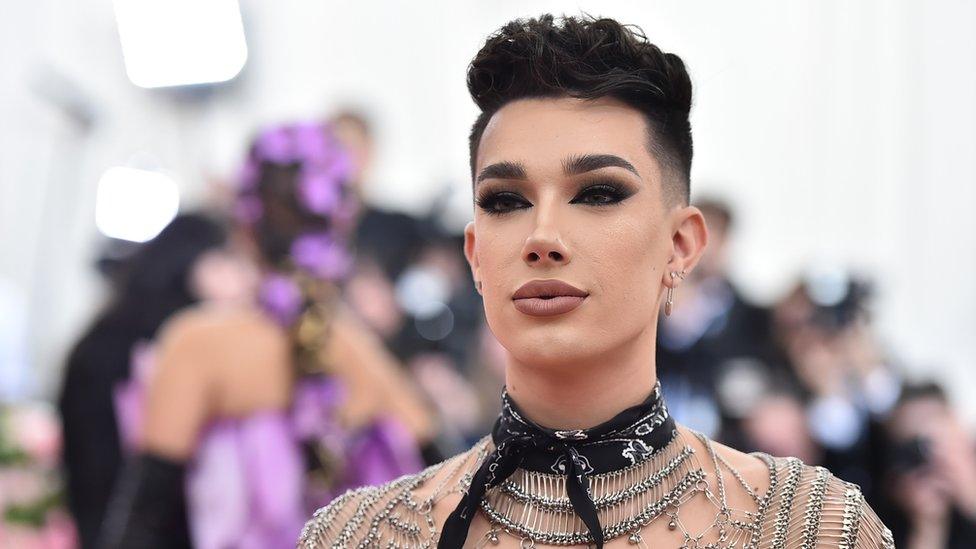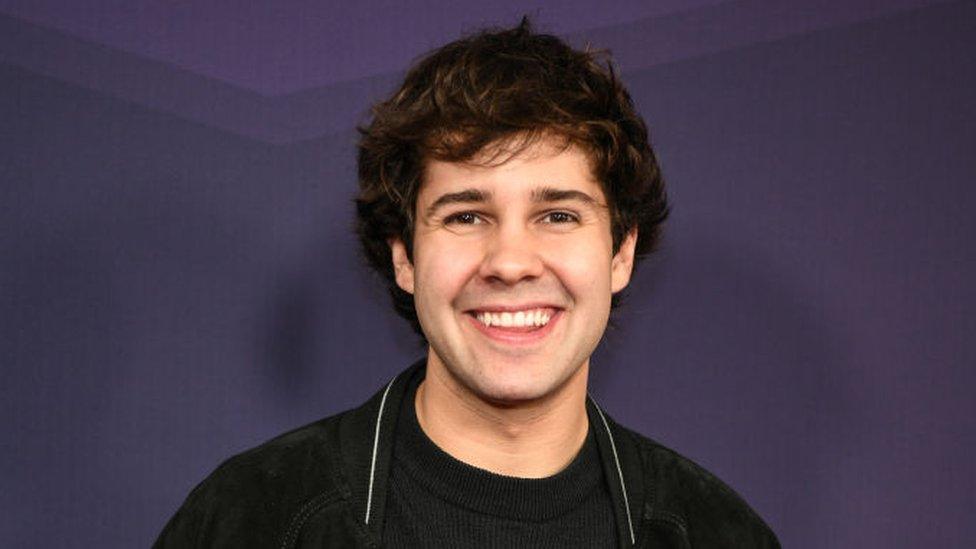James Charles: YouTube temporarily demonetises beauty influencer
- Published

James Charles admitted to two incidents where he came to be aware that the person he was exchanging messages with was underage
YouTube has temporarily demonetised the channel of beauty influencer James Charles.
Earlier this month, he admitted to sending sexually explicit messages to two 16-year-old boys.
YouTube confirmed to the BBC that the 21-year-old - who has 25 million subscribers to his YouTube channel - had been temporarily removed from their Partnership Program.
The program allows YouTubers to make money from their content.
YouTube did not say how long his channel would be demonetised for.
A YouTube spokesperson said the company had applied their creator responsibility policy, external, which states: "If we see that a creator's on- and/or off-platform behaviour harms our users, community, employees or ecosystem, we may take action to protect the community."
This is the second company to re-evaluate its partnership with the influencer.
On Friday, Mr Charles and cosmetics company Morphe announced the end of their partnership.
Allow X content?
This article contains content provided by X. We ask for your permission before anything is loaded, as they may be using cookies and other technologies. You may want to read X’s cookie policy, external and privacy policy, external before accepting. To view this content choose ‘accept and continue’.
According to a statement Mr Charles shared with his 7.8 million followers on Twitter, both parties "agreed to wind down" their collaboration.
Accusations
Earlier this month Mr Charles shared a video entitled "holding myself accountable", external to his followers on YouTube.
In the video, he admitted to two incidents - one last year and one more recently - where, he said, he had become aware that the person he was exchanging messages with was underage.
The video has been viewed more than 8.5 million times.
Mr Charles said on Friday that further accusations had been made that were false.
"Since posting that video, many other people have come forward with a series of misleading stories and false allegations which have been reported on by many people, creators and news outlets," he said via Twitter.
"My legal team has begun taking action against those that have spread misinformation and/or created completely fake stories, as this has gone too far."
Last month, YouTube demonetised the account of David Dobrik, one of the website's top earners, following a rape allegation about a former associate.
Mr Dobrik has denied any wrongdoing.
In 2019, YouTube deleted singer Austin Jones's channel after he admitted exchanging sexually explicit images and videos with underage girls.

Cody Godwin is a reporter based in San Francisco. For more news, follow her on Twitter at @MsCodyGodwin, external

How YouTubers make their money
In recent years, YouTube has strengthened its requirements for monetisation. To apply for membership in the YouTube Partner Program (YPP), external, channels must have more than 4,000 valid public watch hours in the past 12 months and more than 1,000 subscribers.
Once a YouTuber signs up to the YPP terms, there are various ways an income can be earned. These include:
Adverts: for every thousand impressions of the advert that runs before a full YouTube video, the Youtuber will get paid a certain amount of money
Selling products: coffee mugs, T-shirts, posters, wristbands, phone cases - these can all generate money
Fan funding: asking for donations from the audience, sometimes for extra content. Platforms such as Patreon allow creators to earn money by providing rewards and perks to subscribers
Brand deals: some companies pay YouTubers to make videos about their products. This can be highly lucrative for some influencers

You may also be interested in:
Teenage blacksmith Ben Perkins has forged a social media following
Related topics
- Published2 April 2021

- Published26 March 2021
